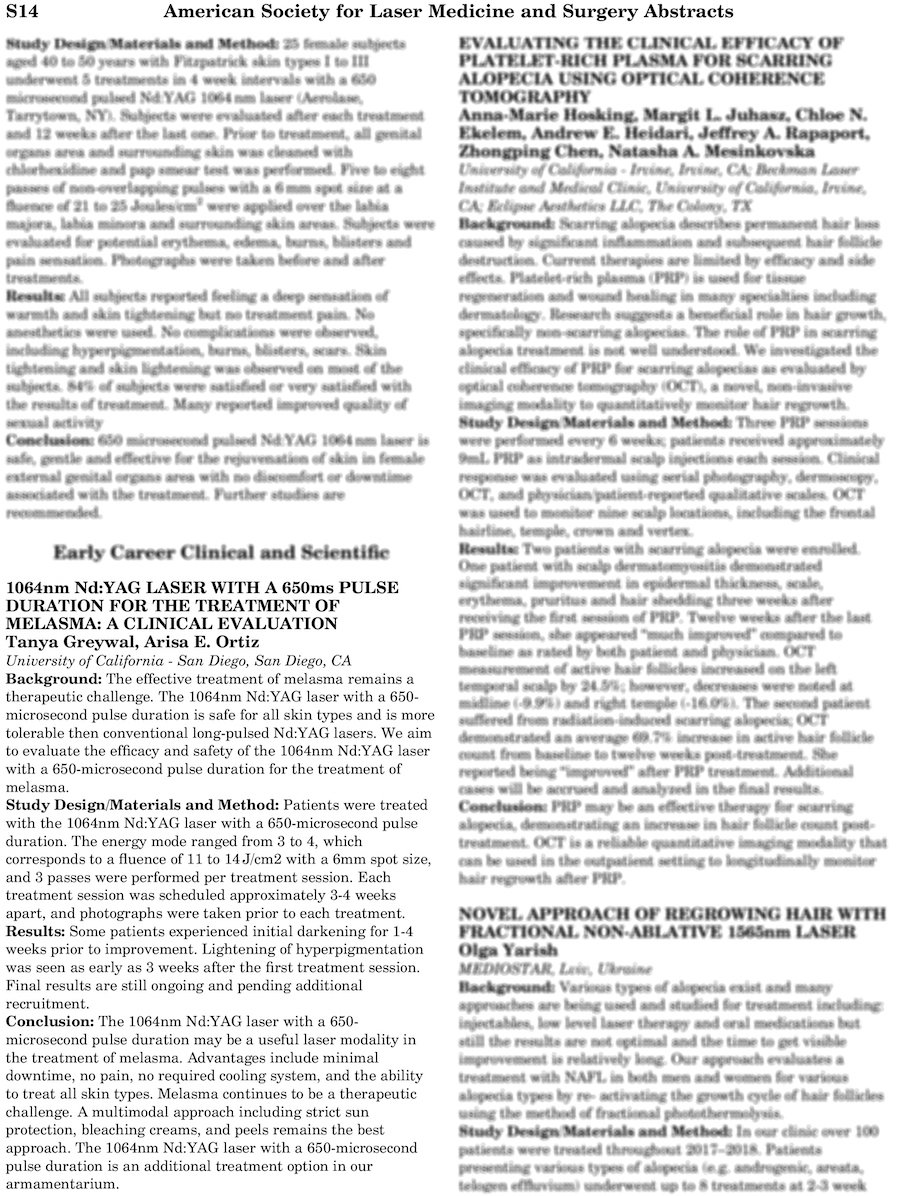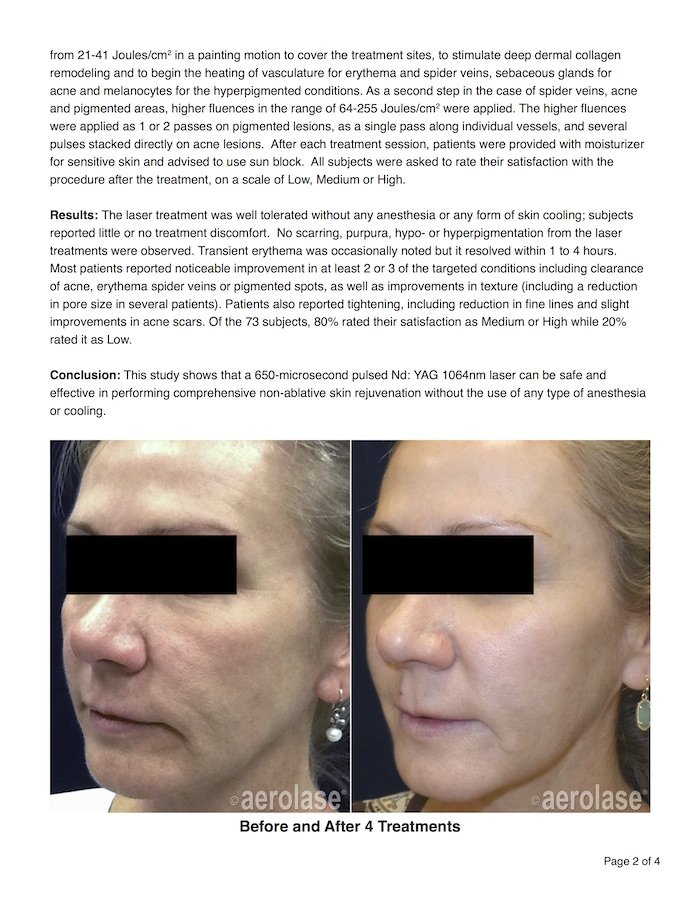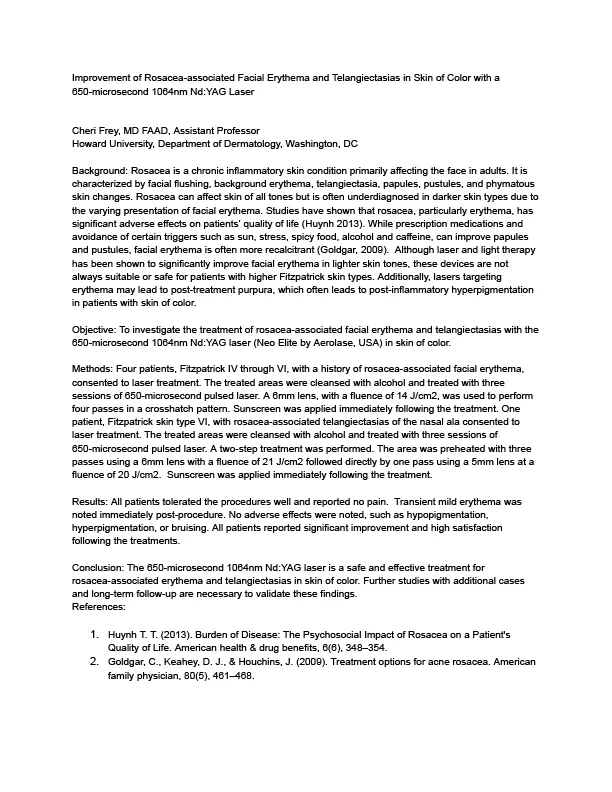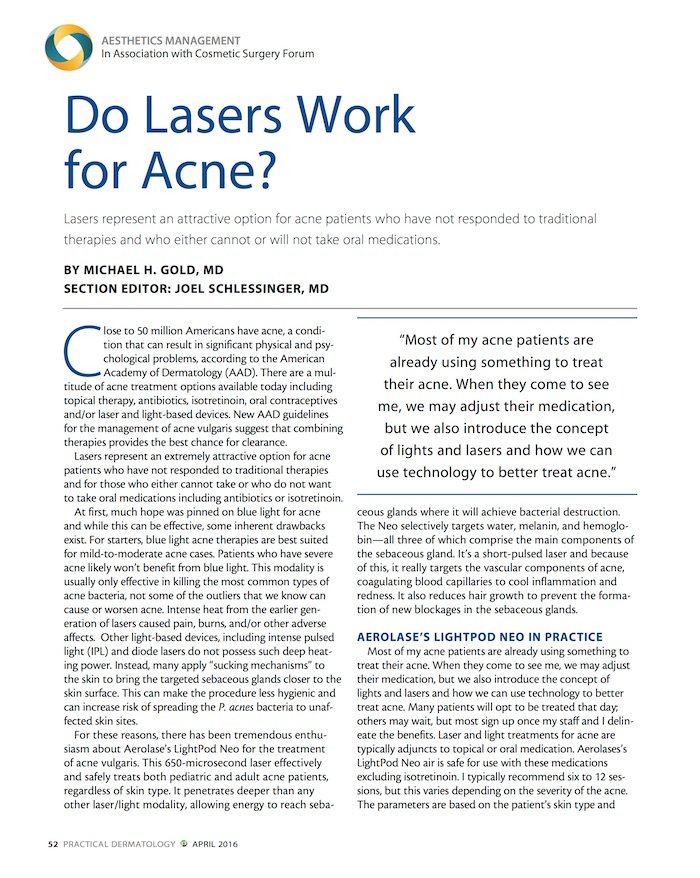Manturova Natalia Evgenievna, MD, PHD, Kruglova Larisa Sergeevna, MD, PHD, Ikonnikova Evgenia Vladimirovna, MD, PHD
Introduction
Laser therapy is a modern therapy for the treatment of rosacea. Depending on the rosacea subtype and severity, several laser modalities may be used to perform the treatment. The target chromophore of rosacea is oxyhemoglobin, which is well absorbed by wavelengths 595nm and 1064nm. Once the laser energy is absorbed by oxyhomoglobin, the energy converts into heat, which diffused the blood vessel causing photocoagulation, occlusion, and, depending on the laser wavelength, thrombosis. Using laser therapy for the papulopustular subtype of rosacea is pathogenetically justified by reducing vasodilation and chronic inflammation.
This study compared the safety and efficacy of a pulsed dye laser (595 nm wavelength) and a neodymium laser (1064 nm wavelength) with a 650-microsecond pulse duration for treatment of papulopustular rosacea.
Materials and Methods
124 patients (72 women, 52 men) with a diagnosed papulopustular rosacea subtype, aged 29 years to 64 years, were divided into 2 equal groups of 62 people each. Each group was treated 4 times each with an interval of 2 weeks. Group 1 was treated with neodymium laser (1064 nm) with a short pulse length of 650 microseconds and at 13-14 J / cm²; Group 2 received therapy with a pulsed dye laser (595 nm) at 10-15 J / cm², pulse duration 3-8 milliseconds. The IGA, PGA, DLQI index was used to evaluate the effectiveness of the applied methods of therapy. Duration of post-procedural observation is 12 months.
Results
A comparative analysis of 3D-imaging and dermatoscopy data showed a high therapeutic efficacy of both devices, however, according to the researcher’s assessment (IGA) and the patients’ assessment (PGA), the IGA/PGA improvement from the therapy was 82.9% / 76.9% in Group 1 vs. 58.8% / 51.3% in Group 2. Also following the treatment with a neodymium laser, the DLQI index decreased by 77.2%, while after the use of a pulsed dye laser, the DLQI decreased by 58.6%. The majority of patients in group 1 (88.2%) noted the tolerability and comfort of therapy with a neodymium laser with a wavelength of 650 microseconds as excellent. In group 2, 61.4% of patients gave a positive assessment of the comfort of the therapy. After 12 months in groups 1 and 2, the majority of patients retained 69.4% and 50.7% of the effect, respectively, which indicates a preventive focus of laser therapy.
Discussion
The cumulative assessment revealed the benefits of neodymium laser therapy with a short pulse length of 650 microseconds in terms of achieving greater clearance relative to a pulsed dye laser for treatment of papulopustular rosacea, as well as greater comfort of the therapy. It is recommended to further study this in patients with other rosacea subtypes, as well as with a combination of subtypes.




